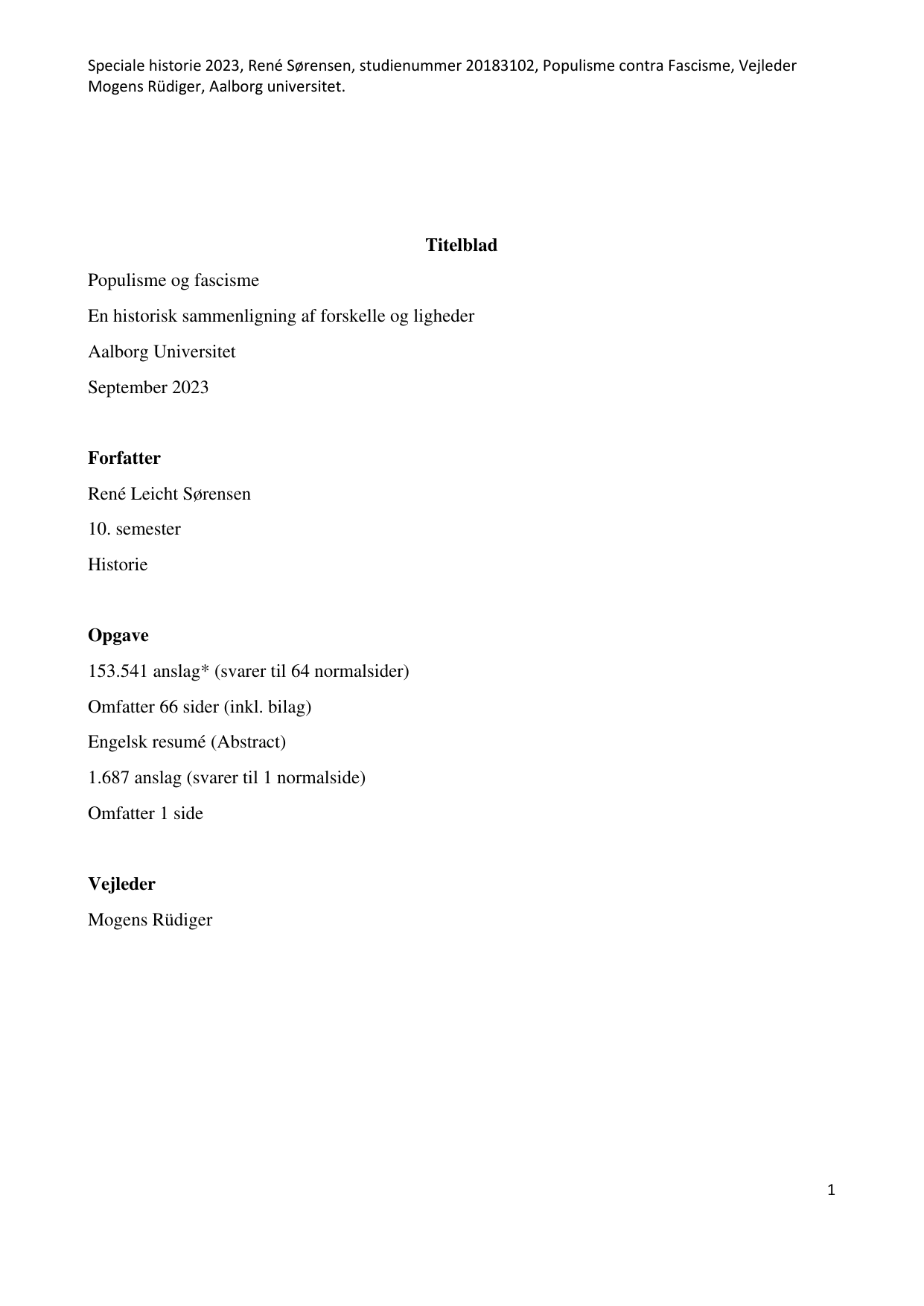
Populisme og fascisme, en symbiose, parasitisme, eller?
Oversat titel
Populism and fascism, a symbiose, parasitism, or?
Forfatter
Semester
4. semester
Uddannelse
Udgivelsesår
2023
Afleveret
2023-09-30
Antal sider
68
Abstract
This thesis seeks to explore the differences and equalities between fascism in Europe from 1919-1945 and populism in Europe from 1945-2023, and how these are expressed. Subsequently the thesis asks the question whether fascism and populism are symbioses, parasitism, or none of these. This will be done methodology by comparing how historians and other scientists have defined the two ideas over time. First the theory of both subjects will be explained in a histography subsection. The analysis part of the thesis will disclose that the differences out way the equality between fascism and populism. Fascism relies on and autocratic, undemocratic, and violent order of conduct to be able to sustain its rule of power, whereas populism, although possibly undemocratic in a capacity of ruling party, still need democracy to evolve and prosper. Other differences on how the perceived modernity and the evolution of the two subjects. Amongst the equalities between fascism and populism are how they use rhetoric, their disgust towards the elite, dividing the people in them vs. us, and finally the need to mobilize the people behind they politics. In the discussion segment these findings are compared and result in how they are expressed, for example fascism used their power to suppress the people in both Italy and Germany in between the two great wars. Populism on the other hand uses, in most cases, to try and change the way politics and democracy is shaped, both in Europe, North America and South America. The conclusion is that fascism and populism are two different entities, with some similarities, but that they haven’t melted into some kind of symbioses or parasitism.
